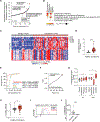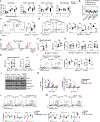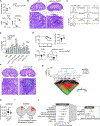C5a-licensed phagocytes drive sterilizing immunity during systemic fungal infection
- PMID: 37220746
- PMCID: PMC10330337
- DOI: 10.1016/j.cell.2023.04.031
C5a-licensed phagocytes drive sterilizing immunity during systemic fungal infection
Abstract
Systemic candidiasis is a common, high-mortality, nosocomial fungal infection. Unexpectedly, it has emerged as a complication of anti-complement C5-targeted monoclonal antibody treatment, indicating a critical niche for C5 in antifungal immunity. We identified transcription of complement system genes as the top biological pathway induced in candidemic patients and as predictive of candidemia. Mechanistically, C5a-C5aR1 promoted fungal clearance and host survival in a mouse model of systemic candidiasis by stimulating phagocyte effector function and ERK- and AKT-dependent survival in infected tissues. C5ar1 ablation rewired macrophage metabolism downstream of mTOR, promoting their apoptosis and enhancing mortality through kidney injury. Besides hepatocyte-derived C5, local C5 produced intrinsically by phagocytes provided a key substrate for antifungal protection. Lower serum C5a concentrations or a C5 polymorphism that decreases leukocyte C5 expression correlated independently with poor patient outcomes. Thus, local, phagocyte-derived C5 production licenses phagocyte antimicrobial function and confers innate protection during systemic fungal infection.
Keywords: C5; C5aR1; Candida; avacopan; candidemia; candidiasis; complement; eculizumab; kidney.
Published by Elsevier Inc.
Conflict of interest statement
Declaration of interests The authors declare no competing interests.
Figures







References
-
- Socié G, Caby-Tosi M-P, Marantz JL, Cole A, Bedrosian CL, Gasteyger C, Mujeebuddin A, Hillmen P, Vande Walle J, and Haller H (2019). Eculizumab in paroxysmal nocturnal haemoglobinuria and atypical haemolytic uraemic syndrome: 10-year pharmacovigilance analysis. British Journal of Haematology 185, 297–310. 10.1111/bjh.15790. - DOI - PMC - PubMed
-
- Federal-Drug-Administration. Eculizumab FDA label (https://www.accessdata.fda.gov/spl/data/68907414-19b7-43c7-be48-9768bb97...).
Publication types
MeSH terms
Substances
Supplementary concepts
Grants and funding
LinkOut - more resources
Full Text Sources
Medical
Molecular Biology Databases
Miscellaneous

